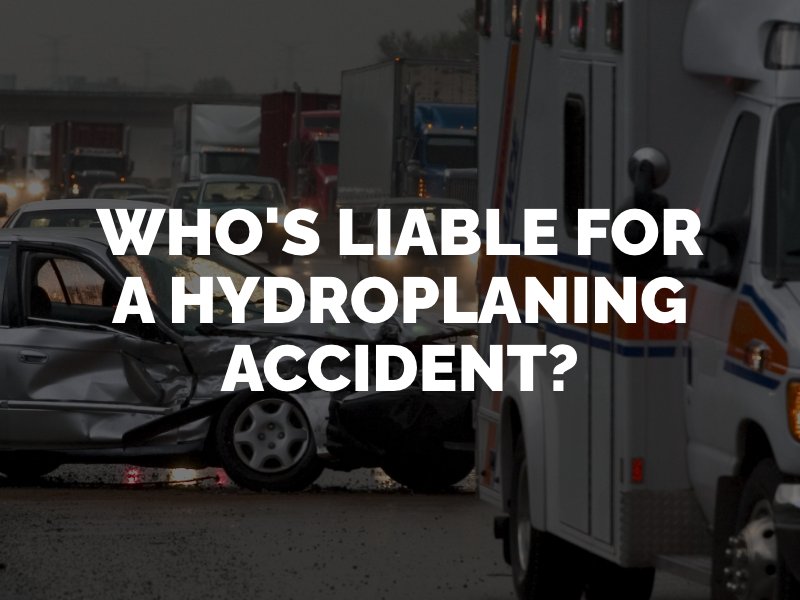Who’s Liable for a Hydroplaning Accident?
Hydroplaning refers to a vehicle skidding or sliding across a wet road surface. In many cases, the driver of the hydroplaning vehicle will be held financially responsible, or liable, for a related car accident. However, liability can depend on several factors, including driver behaviors, tire condition and the state of the road.

What Is Hydroplaning?
If a vehicle hydroplanes, this means it slides uncontrollably on the wet surface of a road. Hydroplaning, or aquaplaning, can occur when the conditions of a road are too wet for a vehicle’s tires to displace the water fast enough to access and grip the underlying road surface and keep the driver in control of the car. Hydroplaning is a dangerous driving condition that causes the tires of the vehicle to lose their traction and contact with the road – making it impossible for the driver to steer, stop or control the vehicle.
Can Hydroplaning Be Prevented?
Motor vehicle drivers can often avoid hydroplaning with a few preventative measures. First, they can ensure their tires are inflated to the proper PSI, or pounds per square inch. Keeping tires properly inflated can help them grip the road in wet or dangerous conditions. Then, reducing the speed of a vehicle on wet roads can give the tires enough time to remove standing water and prevent hydroplaning. Other tips to reduce the risk of hydroplaning include turning off cruise control, driving in a lower gear, avoiding puddles or standing water, reducing speed around corners, and avoiding hard braking.
Who Is Responsible for a Hydroplaning Car Accident in California?
In California, the “fault-based” insurance law states that the person or party most at fault for causing a motor vehicle accident is responsible for paying for related medical bills and property damage. However, determining the at-fault party is not always easy. In a hydroplaning accident, the liable party could be one or multiple entities, including:
- A negligent driver: a motor vehicle driver who falls short of the duty to reasonably prevent a loss of vehicle control, such as by speeding in rainy conditions or failing to replace tires with worn-down tread, could be held responsible for a subsequent crash.
- The tire manufacturer: a company that produces or distributes defective tires could be held liable for dangerous tire defects, such as tread or sidewalls that wear down at a rapid rate. These defects increase the risk of tires losing their traction on wet road surfaces and causing hydroplaning.
- The government: the entity responsible for maintaining safe roads in California, such as the city or state government, could be liable if negligent road maintenance leads to dangerous defects that cause hydroplaning (e.g., a lack of adequate drainage or potholes).
- A property owner: if there are known hydroplaning risks on a road, the owner or controller of the property has a responsibility to post warning signs to help prevent foreseeable car accidents. The failure to post warnings could lead to property owner liability for a crash.
It is important to consult with an experienced car accident lawyer in California if you have been injured in a hydroplaning accident. Liability for your losses will depend on the facts of your specific case, such as who or what contributed to the crash. An attorney can investigate your hydroplaning accident and provide professional legal counsel for how to file a claim.
